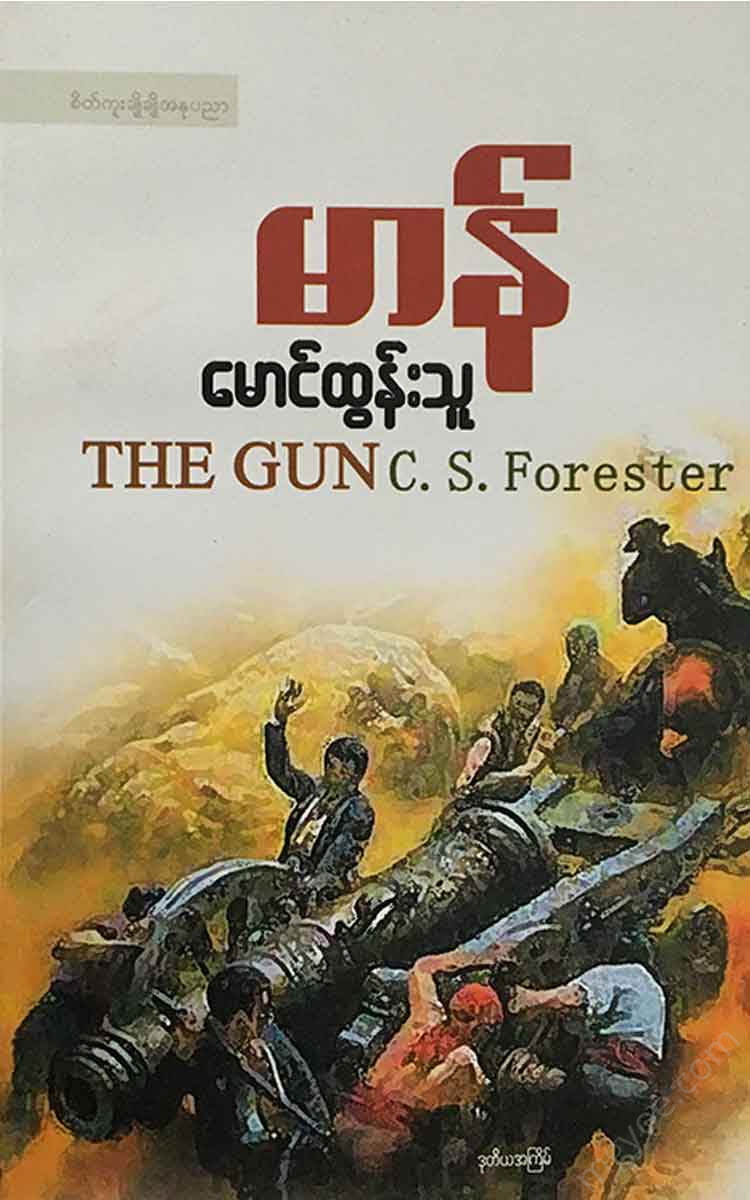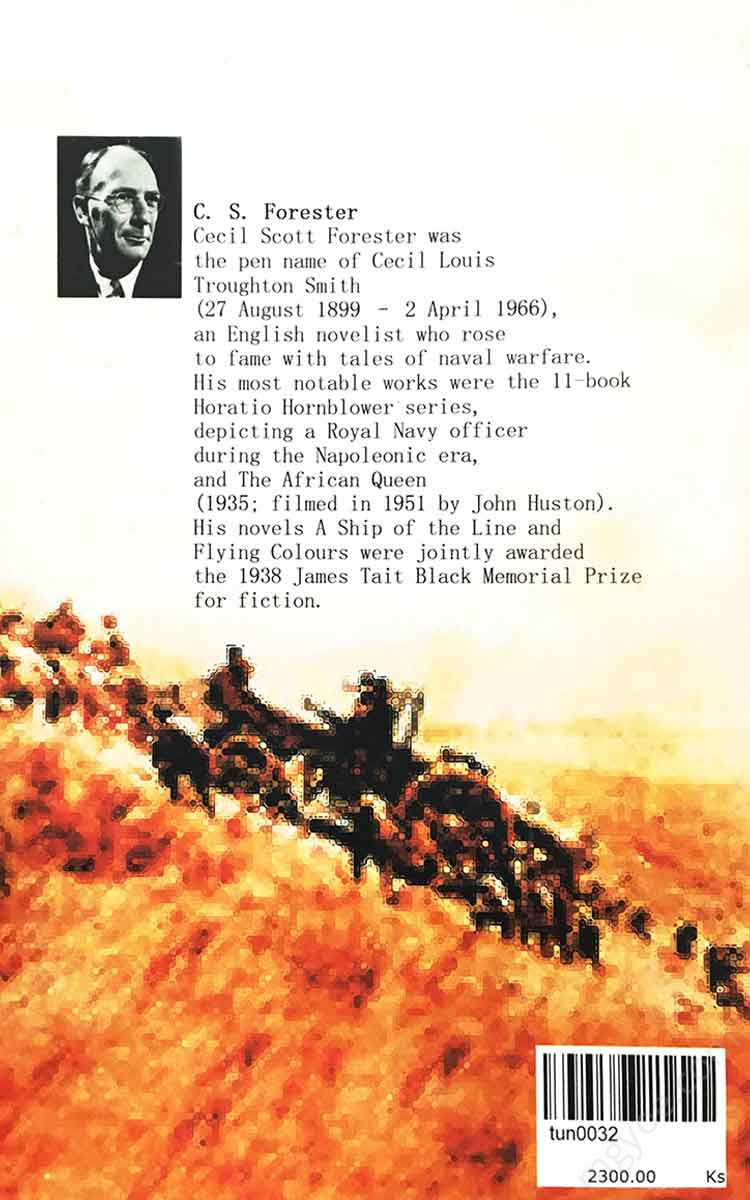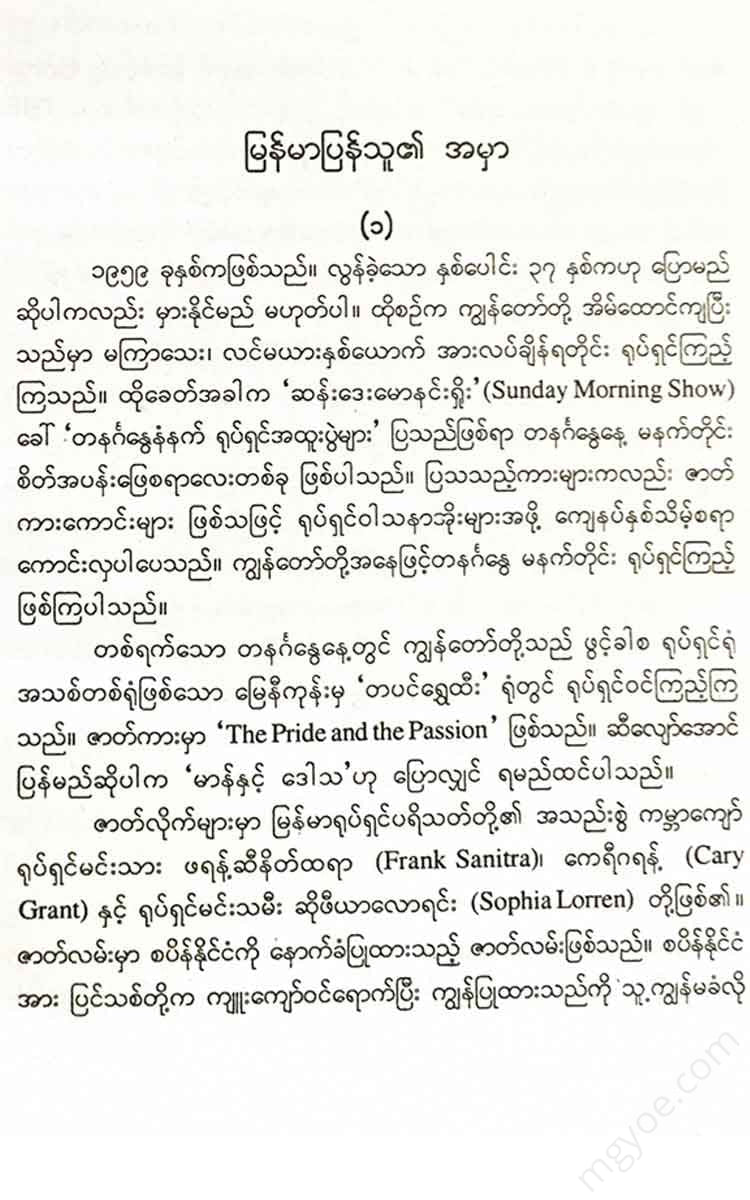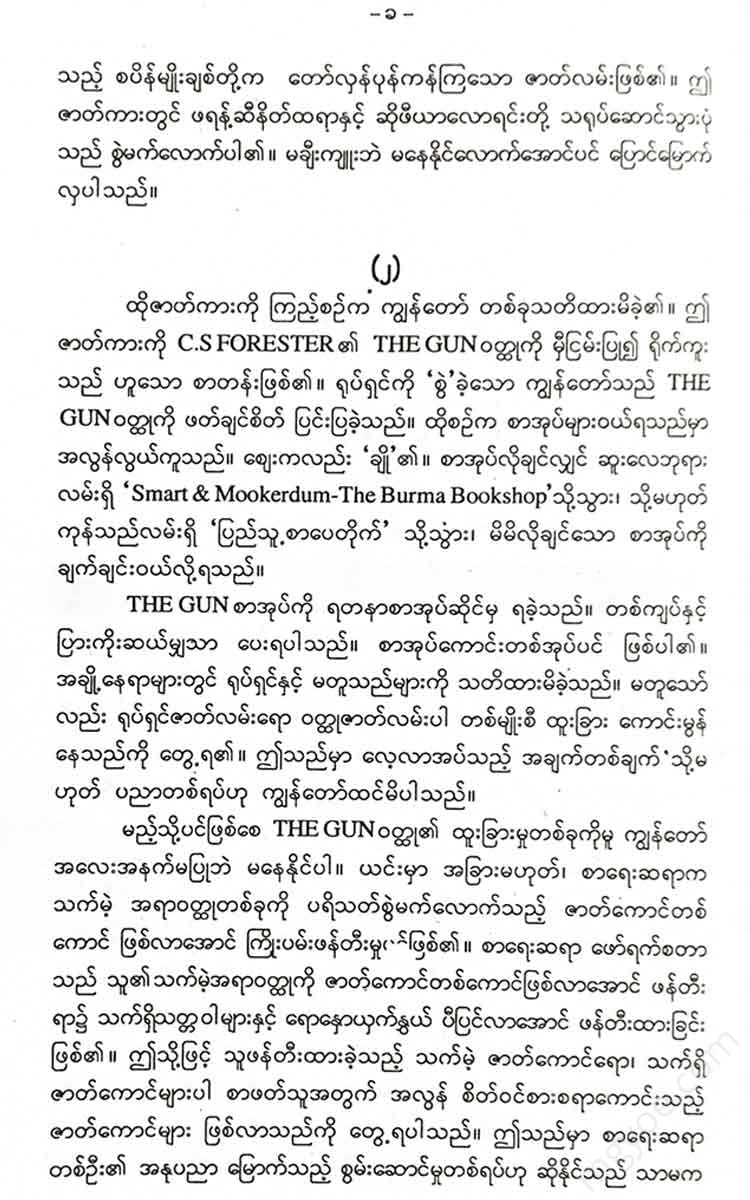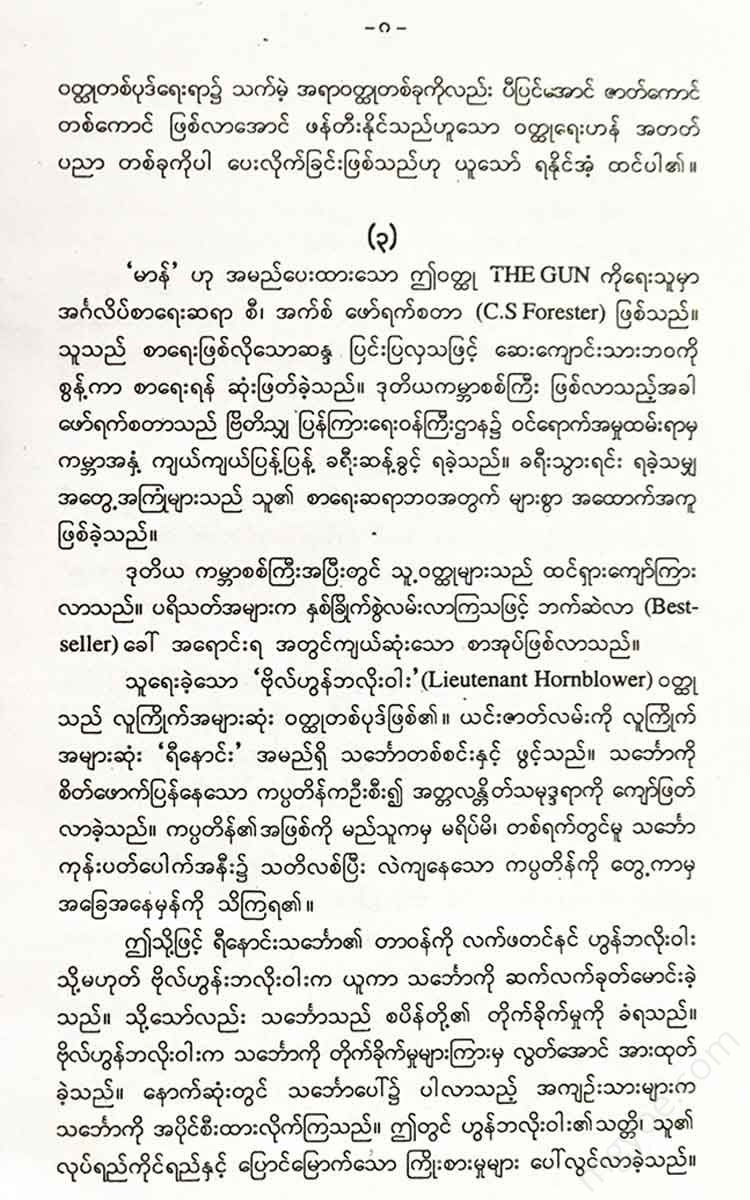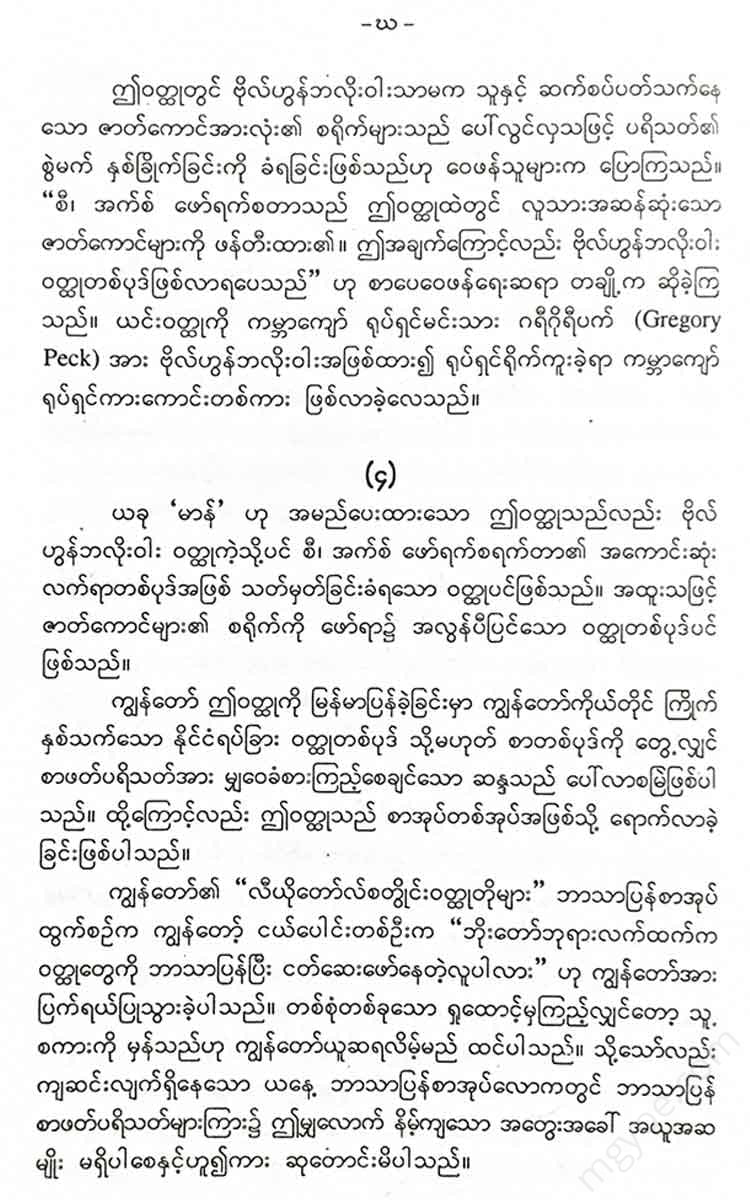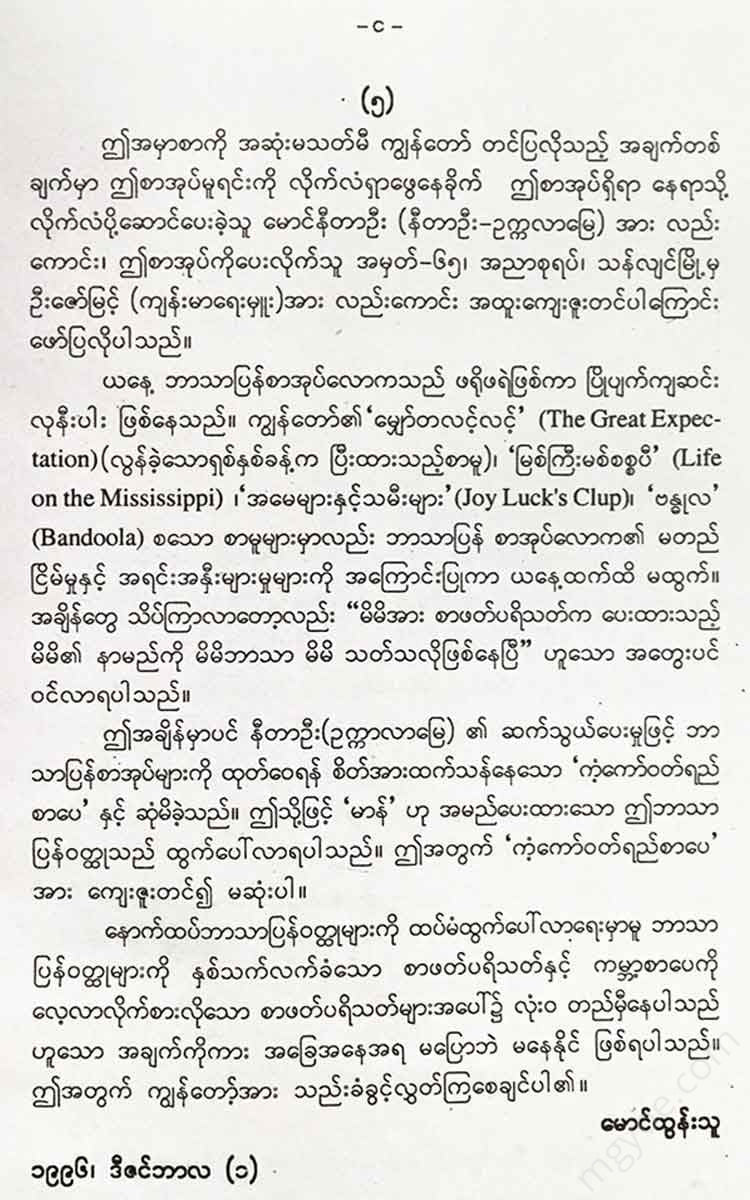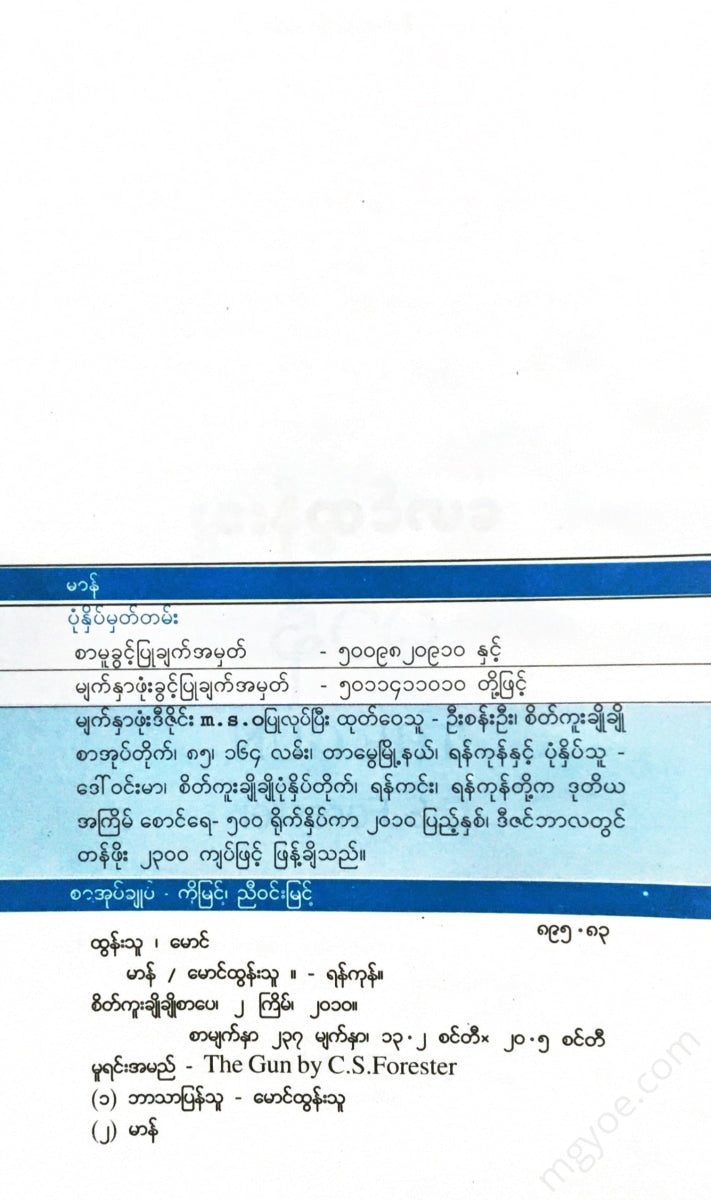စိတ်ကူးချိုချိုစာပေ
Maung Tun Thu - Pride
Maung Tun Thu - Pride
Couldn't load pickup availability
( 1 )
The defeated army retreated from Espinosa across the mountains. The army, a large force of about twenty thousand men, was retreating at a rapid pace over a distance of twenty miles. The road, which was left behind them for about a hundred miles, was littered with the sick and dead, and the bodies of those who had fallen were scattered everywhere.
The cavalry were leading the way. Among the retreating troops, these were the most fortunate, as they were still able to travel on their own horses. For this group, the place they were now in was much safer than where they had been before the retreat, and this was encouraging.
The cavalry was followed by the infantry. They were moving in groups. There were also some who were walking in pairs. Their uniforms were torn and faded. The flesh that showed through the holes in their uniforms was black and gray from disease and cold.
Of the entire retreating army, nearly half still had muskets, and about a quarter of the men still had bayonets. Some of the men still looked like soldiers, but they were few in number. The rest were completely disfigured by the wounds they had received at Espinosa.
They were all struggling to escape the French troops who were following them, and their suffering was no small one. The soldiers who were still strong and vigorous were able to move at a brisk pace, getting farther and farther away from the enemy, but the exhausted and exhausted soldiers were left far behind those who were at the forefront.
The situation of the army is already in a state of decline and collapse. In the summer, these soldiers are dressed in rags, in the winter, they have little to eat, and now that all the troops have withdrawn, it is winter, and they are repeatedly facing very bad conditions.
In the past few days, the town of Espinosa, where they were stationed, had been surrounded by the French. Then, they were defeated and had to surrender Espinosa. The path they were now retreating on was very difficult. They were not retreating over the “fertile” plains. They were retreating through mountains that were completely devoid of food and water, and were very far from the plains.
It had been raining for days. The rain was so heavy that it seemed to be pouring down. Meanwhile, the higher they climbed, the more they were hit by a cold, howling wind. Straight ahead, on the peaks and walls of the mountains, vast expanses of snow lay. The thought of having to cross those vast expanses of snow, which were so beautiful, was unthinkable. But they had no choice.
They had no food, no fuel, no rest. They knew nothing but the danger of the French army following them. And so, as time went on, the signs of various diseases began to appear. At a time when they were no longer able to withstand the weather and the lack of food and water, if various diseases came, they would all be wiped out.
Soon, typhoid, dysentery, pneumonia, etc., became widespread among the soldiers. Some people fell down in the middle of the road while walking. Some died instantly, while others fell into a coma.
Those who followed were usually tired and weak, and could not show themselves. They could not help but step on those who suddenly fell in front of them, and often stepped on them. Blood was dripping from the feet of the soldiers without shoes, leaving bloody footprints on the road in many places.
The scene at the front of the retreating army was such that the situation at the rear was undoubtedly even worse. Some of those who followed behind were walking on all fours, unable to use their legs. This group included women and children, and it was not a comforting sight. They were unable to keep up with those in front, and were left far behind, forming a separate group.
In this section we can see the remains of the military equipment that Espinosa had managed to escape. These items have not been abandoned yet, and they have been carried for over a hundred miles. The horses that carried the equipment have all died. Only a few small cannons and carts are being pulled by mules that are dying. In fact, the mules are no longer strong enough to pull the equipment. They are driven by the soldiers who are following them, beating them with whips and driving them with great force.
Sometimes the carts, swaying and swaying, would crush the sick and the dead in the middle of the road. The people were so weak that no one could control the carts. They would trample people and make no difference. They would not even have time to look back to see if they were dead or alive. They would not care about anything else except pulling the cart wheels that were stuck in the mud.
If we look at the entire retreating Spanish army, the only one that has been working so far, faithfully and with such hardship, is the artillery. The number of guns on the left of the artillery is only a small one. These are the guns that Espinosa had escaped from.
In fact, the artillerymen were not willing to bother towing these remaining guns. They knew that it would be dangerous to tow these guns in this manner. They also understood that if they left them where they were, no one would be interested in them.
So why do they persist in carrying out their duties with such great determination? The answer is clear. It is because of their natural “stubbornness.” In other words, it is because of their stubborn nature. This nature, combined with the ingrained discipline, has driven this group to pull these cannons to this point.
This division, the last to advance in the retreating Spanish army, had one of the largest, heaviest, and most imposing cannons. It was larger, heavier, and more imposing than the six-pounder cannon made of iron. The cannon was thirteen feet long, and the diameter of the muzzle at the base was exactly two feet. The diameter of the muzzle of the cannon was exactly one foot.
This cannon is an eighteen-pounder copper cannon. Made of a mixture of copper and tin, the color of the cannon is a bright reddish-brown. The barrel and barrel of the cannon are carved with traditional symbols and ornamental sycamore branches. The design is not only beautiful but also elegant. This cannon seems to have been made for the decoration of a wealthy nobleman's palace.
Around the mouth of the cannon is a Latin inscription. It is a prayer poem. The inscription reads: “Only then will the mouths of the disciples be opened. May the Lord’s praise be received.”
Just by looking at this verse, one can deduce that this cannon must be one of two cannons of the same size and shape. The one made at the same time as him would have had the preface, “O God, open our lips.” If there were a cannon with the second verse of the prayer poem, the one with the first verse would not have been missing.
In any case, the two cannons inscribed with these two verses of the prayer poem would have stood majestically on either side of the entrance of a castle in southern Spain. However, a situation suddenly arose in which the two cannons, which were supposed to be decorative, were to lose their original function.
The Spanish revolted against the French, who were forcibly invading their country. Then, national uprisings broke out in various parts of the country. This led to the Spanish encirclement of a French army in the city of Berlin.
In that fierce battle, these two cannons became the main weapons for the Spanish artillery, especially for the Spanish artillery, which was fighting with insufficient weapons.
Finally, Napoleon, furious at the Spanish attacks, led a huge army into Spain, crossing the “Pyrenees” between France and Spain. A series of major battles followed, and these cannons fought at the battles of Gamonelli or Riosico or Tudela, and one of them apparently fell into the hands of the French during one of those battles. The French then probably placed the cannon they had captured somewhere as a symbol of their victory.
This cannon, which was left in the hands of the Spanish, probably suffered the same fate as its companion, which the French had taken behind. Blake's Spanish army, which had suffered defeat, was the last to follow. About a dozen mules were dragging the cannon, which weighed three tons, over a very rocky road.
The mules had to be beaten mercilessly with whips by the mules' drivers, who stood on either side, to make them move even a step. The mules' flanks were already red with blood, and the heavy cannon struggled to move forward even a yard at a time. Every time it moved, the cannon wheels would accelerate and crush the large stones on the road.
The artillerymen were climbing the hills and valleys step by step, and the last stage they saw was incomparably different from the previous stages. The ridge that stood before them was winding and curving around the mountain wall. The mules, carrying the heavy load, were struggling to survive each bend.
The mule drivers would shout at the mules and beat them mercilessly with sticks whenever they reached a bend.
Blood was dripping down the sides of the mules. The artillerymen, with what strength they had left, held the cartwheels and pushed them along. The wind was blowing hard around them. The hailstones that came with the wind were hitting them with great force.
At that moment, an inevitable event occurred. With one last effort, one wheel rushed up the rock, but the other, due to the weak traction of the mules, was left behind. In this way, the cannon swayed and fell to the side. The artillerymen who were pushing the cannon around were also thrown into chaos and fell to pieces. The huge, heavy cannon, on the other hand, lay on its back, looking ugly and ugly. The other wheel, which was hanging on top, was slowly turning.
Seeing this, the artillerymen had already figured out the answer. The task of re-installing this three-ton cannon would take hours. It would not be easy to get the donkeys to fight again. The ones that were lying down at the moment did not move at all, and the only way to know if they were still alive was to see their thin, bulging sides. Most of the donkeys could not be hit with a stick or kicked.
The cars that had not yet fallen over and were still standing there, their ears pricked up, their backs to the wind that was blowing in heavy rain. The French cavalry, following closely behind, looked back frequently as they retreated, fearing that they might appear at any moment.
Every time I looked, I saw cavalrymen with swords drawn, didn't they?
The constant wind, the cold weather, the exhaustion and the hunger made the artillerymen no longer interested in re-loading the cannon. They cut the ropes that were attached to the cannon and continued their journey. By firing, their men could continue their unfinished journey with ease. - The cannon fell in the middle of the road with one wheel in the air. The mules that lay near the cannon were almost dead. The scene was strange. It seemed to be surrounded by animals sacrificed to an imaginary god.
The Spanish army abandoned its cannon in the middle of the road and continued its march. More than thirty thousand soldiers fought at Espinosa. Twenty thousand soldiers escaped from the terrible disaster.
Throughout the long journey through the mountains, the Spanish soldiers faced many dangers. During the winter, they were attacked by various diseases, which left about eight thousand soldiers dead on the slopes.
The soldiers who survived the long journey reappeared the following spring, sacrificing their lives in the brutal and brutal battles that were taking place somewhere in Spain.
The French troops retreated the same morning, when the Spanish had abandoned their artillery in the middle of the road. They did not dare to enter the deserted and rugged mountains, and did not spare any energy. Rather than attack the enemy army, which was facing defeat, they decided to avoid the mountains, but instead moved sideways and advanced towards the plains where the road to Madrid lay.
